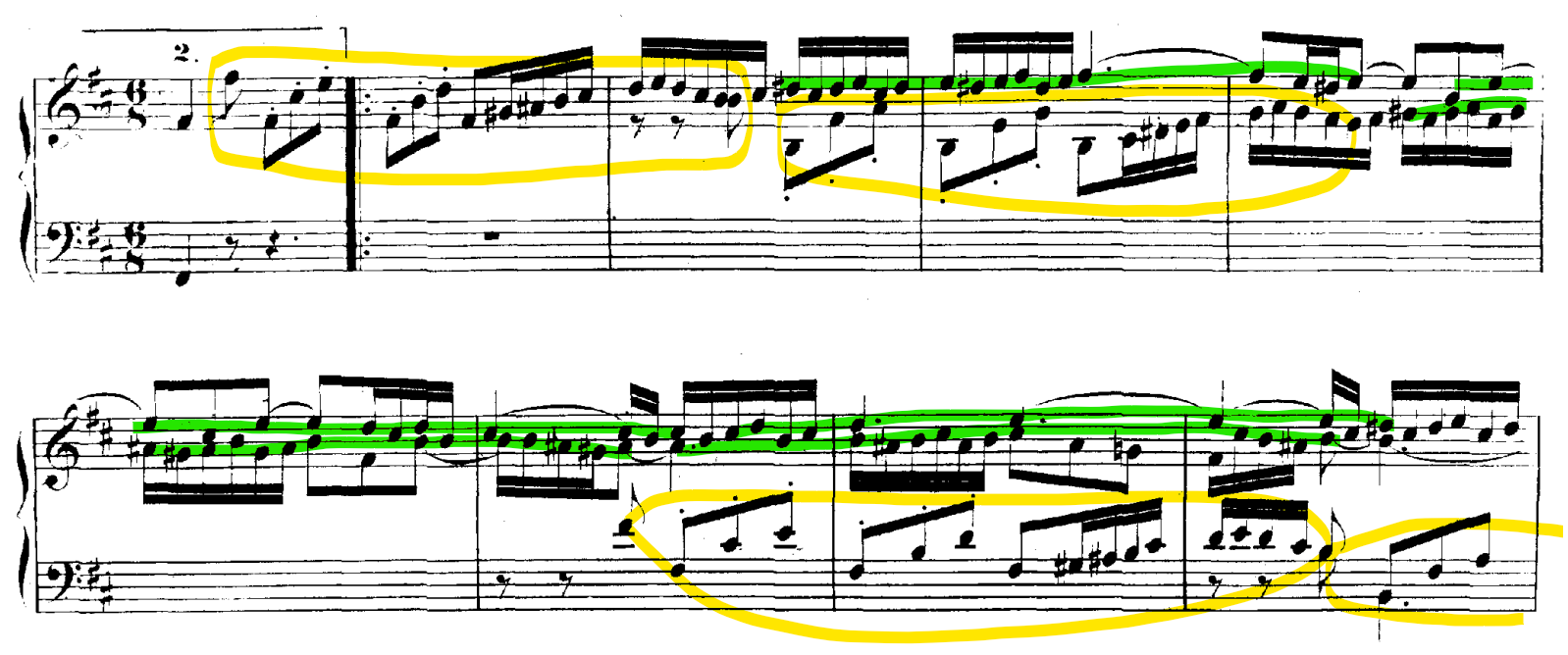After the opening section which I’ve analysed here, a fugue starts, which I will analysis in this post.
As is common to fugues, this fugue starts with the subject in one voice, which is answered by the subject on the dominant in another voice, accompanied by a countersubject. After a short transition section, the subject is played in the tonic in the bass voice, accompanied by the countersubject and some other contrapuntal material.

Four note pattern
Let’s analyse the material at bit closer. All elements of the fugue are derived from a four note pattern:
We’ll look at one voice of the fugue in isolation, to see how it’s built up from this pattern. First of all, the subject can be analysed as three voices in one: The top two voices which play out the four note pattern in parallel Thirds, and the bottom voice which stays on the fifth degree.
Secondly, the countersubject can be analysed as the inversion of the four note pattern. Although the countersubject comes in many variations, it always follows that pattern, or in some cases just the first three of the four notes (the “head” of the pattern).
Because the subject and the countersubject are inversions of eachother, they have completely contrary motion, which makes for great counterpoint! This whole page of music consists of this type of counterpoint, plus having different voices play the same pattern in parallel Thirds (as we saw in the subject theme).
Listen to the first voice in isolation while you read along with the reduction below. In the audio I’ve emphasized the important notes.
Sixteenth notes
Now that we’ve looked at the longer lines of the voices, we’ll turn our attention to the shorter sixteenth notes patterns used in the music. Take a look at this burst of sixteenth notes:
I’ve annotated the places where the four note pattern occurs in diminution. Diminution means it’s played faster or shorter. I’ve added ‘I’ where the pattern is in inversion and ‘R’ where the pattern is in retrograde. Both ‘I’ and ‘R’ also occurs. As you can see, the sixteenth notes in this fugue are clearly derived from the four note pattern which is the basis of the fugue.
Reduction
Now take a look at my reduction of the whole first page of the fugue. You can clearly see the four note pattern in the subjects and counter subjects. See how the whole piece is composed of parallel motion in Thirds and contrary motion, resulting in smooth counterpoint.
Also, take note of the section starting from bar 13 all the way to the end. It starts with a sequence of the subject going up by a Second every two bars. Then it turns into a sequence going down by a Third every one-and-a-half bars. It’s polymetric, doing two 9/8 bars over three 6/8 bars! The sequence then turns into a half cadence, followed by one last subject in the bass voice, and finally a full cadence.
This pattern of long sequences -> short sequences -> cadence is common in baroque music, it has the effect of intensifying the music, bringing it to a climax at the cadence. The sudden reappearance of the subject in the low register just before the cadence adds even more intensity, another trick common in Bach’s fugues.